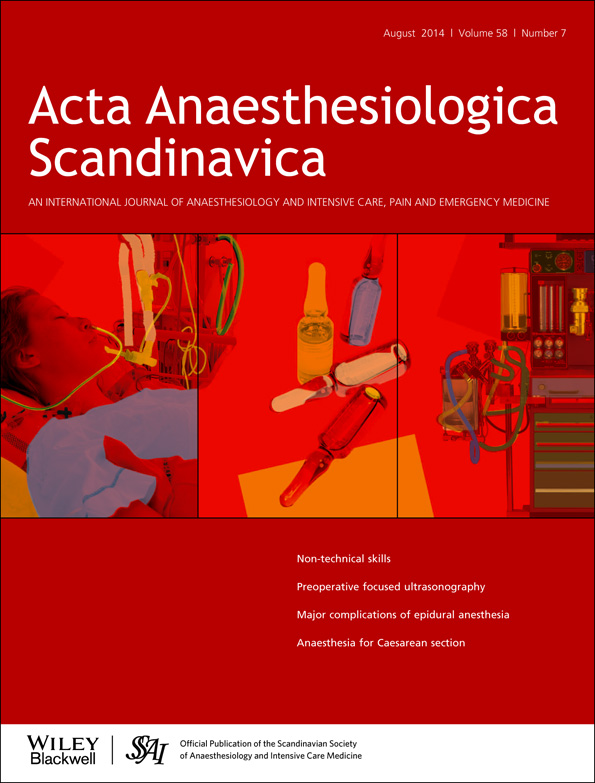Dynamic variables and fluid responsiveness in patients for aortic stenosis surgery
Abstract
Background
Aortic stenosis is the most common valvular disease in developed countries, but it carries an increased mortality during non-cardiac surgery underscoring the importance of adequate hemodynamic management. Further, haemodynamic management of patients immediately after surgery for aortic stenosis can be challenging. Prediction of fluid responsiveness using dynamic variables has not been sufficiently studied in patients for aortic stenosis surgery.
Methods
Observational study evaluating fluid responsiveness on 32 (31 analysed) patients scheduled for aortic valve replacement due to aortic stenosis on mechanical ventilation before and after valve replacement. Increase in stroke volume (oesophagus Doppler) ≥ 15% to a fluid challenge defined fluid responders.
Results
Before surgery (31 fluid loads performed in 31 patients), areas under receiver operating characteristics curves (95% confidence intervals) were stroke volume variation (from arterial pulse contour analysis) 0.77 (0.58–0.90), pulse pressure variation 0.75 (0.54–0.90) and Pleth variability index 0.51 (0.31–0.69). After aortic valve replacement (31 fluid loads performed in 23 patients) the values were stroke volume variation 0.90 (0.74–0.98), pulse pressure variation 0.95 (0.80–1.0) and Pleth variability index 0.72 (0.52–0.87).
Conclusions
The arterial pressure-based variables had moderate predictive values before valve replacement, but it predicted fluid responsiveness well postoperatively. Pleth variability index did not predict fluid responsiveness preoperatively, and it had a moderate predictive value postoperatively. These results indicate that arterial pressure-based dynamic variables have limited potential to guide fluid therapy in patients with aortic stenosis. Their ability to guide fluid therapy after aortic valve replacement seems better.




